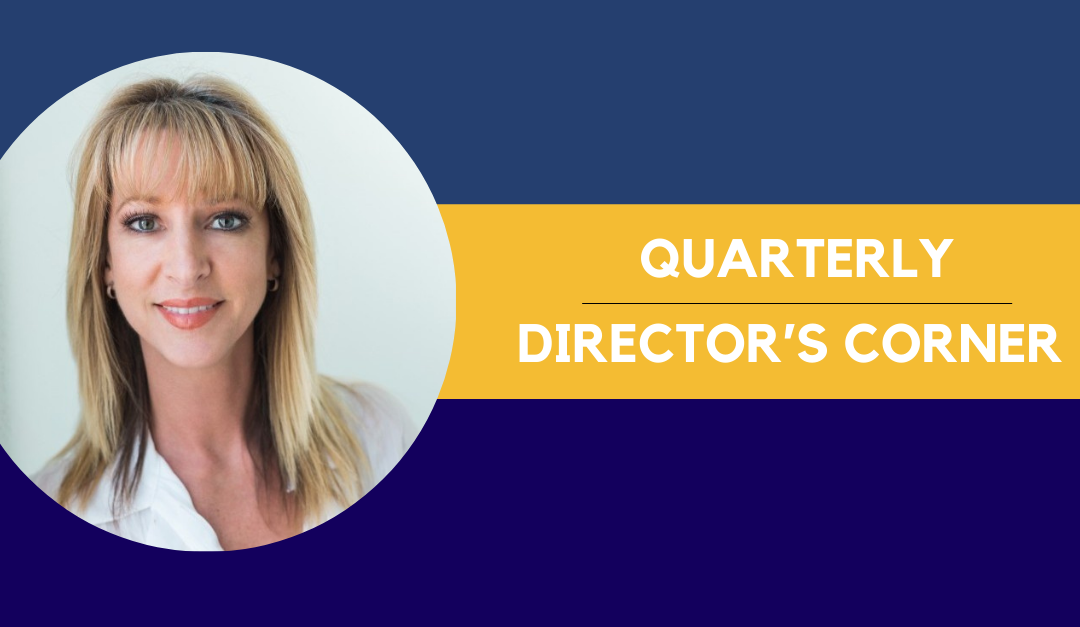Judy Fox – Michelson IP Director’s Corner
Schools are ramping up all across the country. Along with it, teachers are reminding students of the importance of creating work that is authentic and warning them of the consequences of plagiarism. Plagiarism occurs when someone copies or “steals” the writings or ideas of another and presents them as their own. Plagiarism is not a legal term, rather it is viewed as an act of violation of Copyright law–an infringement of someone else’s intellectual property (IP). Over the past few months I have spent time with K-14 faculty from a variety of educational institutions who shared there is little to no discussion with students about intellectual property beyond the topic of plagiarism. This indicates a huge opportunity for educators to make an impact in this space.
Whether a copyright, trademark, trade secret, or patent, intellectual property is at the forefront of every idea, innovation, and invention–and students are also their creators. Intellectual property gives students power–if they know about it. Here are a few examples:
Born from a school assignment…
Kylie Siedmonds received a patent for the iPack, a backpack she created for children undergoing chemotherapy, in 2014 at the age of 11. The assignment: Invent something for an everyday problem. Check out her video here.
He was just trying to come up with a science fair project…
Shubham Banerjee was a 12 year old from Santa Clara, CA when through a science project, he invented Braille printers to help the visually impaired. He named the printer brand Braigo (Brai-lle +Le-go). Using LEGO and robotics, these printers are nearly half the price of others on the market. Now, he is the founder of Braigo Labs, Inc and a student at UC Berkeley. He is the youngest person to secure venture capital. Check out his story here.
Introduce your students to IP.
IP ownership gives students the power to protect and commercialize their own creations. What may start off as a simple Tuesday assignment or friendly competition between classrooms can lead to the next device to detect Parkinson’s disease, the utilization of ocean energy to create a stable power source, or a new technology that organizes cells.
“Intellectual property is the future and should be taught to all students…as early as kindergarten,” Dr. Gary K. Michelson, Founder of Michelson IP, said on a recent episode of the “Understanding IP Matters: From Creator to Entrepreneur” podcast. Listen to more of his interview here.
We couldn’t agree more, Dr. M.
We have a Hub for that.
Michelson IP makes it simple to introduce intellectual property to students. Download our free, online textbook with teacher modules in Canvas and Blackboard; share our entertaining video series, assign some unique IP projects to your students. You’ll find all this and more, provided free of charge, on the Michelson IP Resource Hub.
Did you know…
Did you know, there is no age limit to hold a copyright, trademark, or patent? Or that when a project is presented publicly in detail, such as a science fair project, the student has one year to file a patent application? Stay in-the-know and learn tips and tricks to support intellectual property education and practice by subscribing to our newsletter. Have a question or an interesting story? Let us know!
We look forward to staying connected and advancing equity in IP together, with you.
Sincerely,
Judy Fox
Director, The Michelson Institute of Intellectual Property
_________
 The Michelson Institute for Intellectual Property, an initiative of the Michelson 20MM Foundation, provides access to empowering IP education for budding inventors and entrepreneurs. Michelson 20MM was founded thanks to the generous support of renowned spinal surgeon Dr. Gary K. Michelson and Alya Michelson. To learn more, visit 20mm.org.
The Michelson Institute for Intellectual Property, an initiative of the Michelson 20MM Foundation, provides access to empowering IP education for budding inventors and entrepreneurs. Michelson 20MM was founded thanks to the generous support of renowned spinal surgeon Dr. Gary K. Michelson and Alya Michelson. To learn more, visit 20mm.org.
